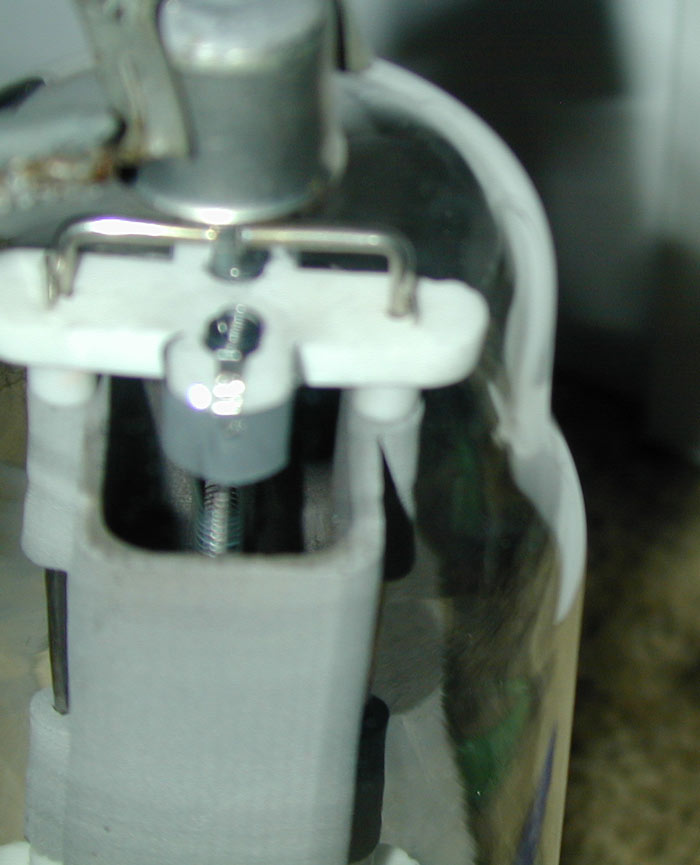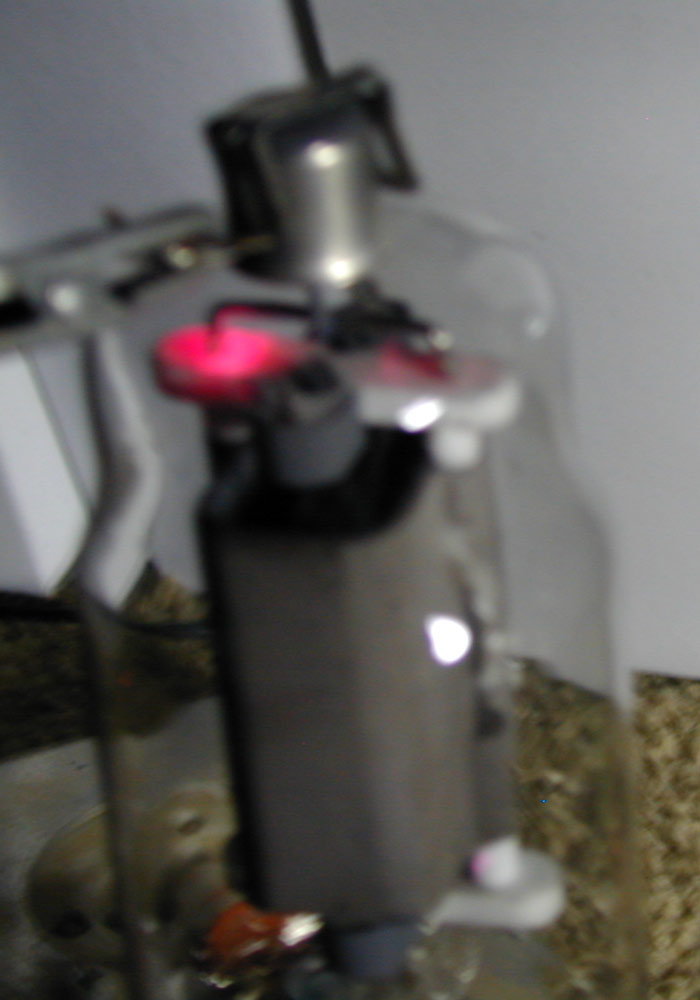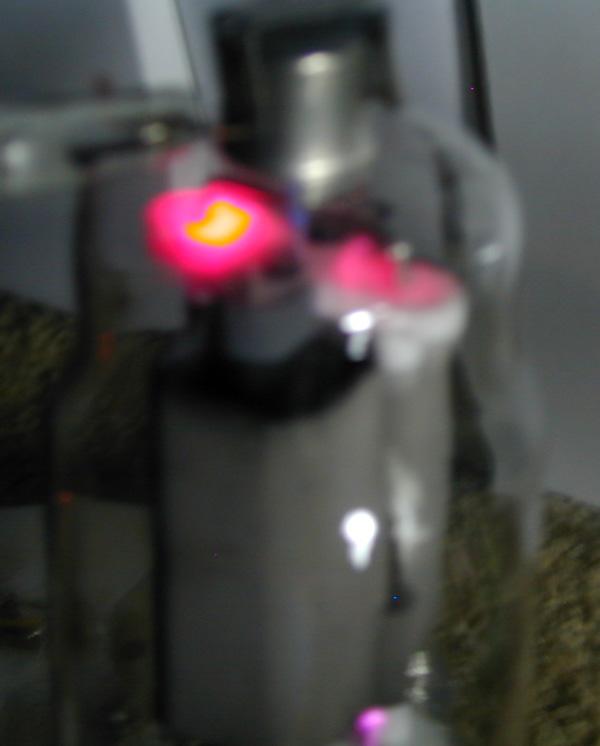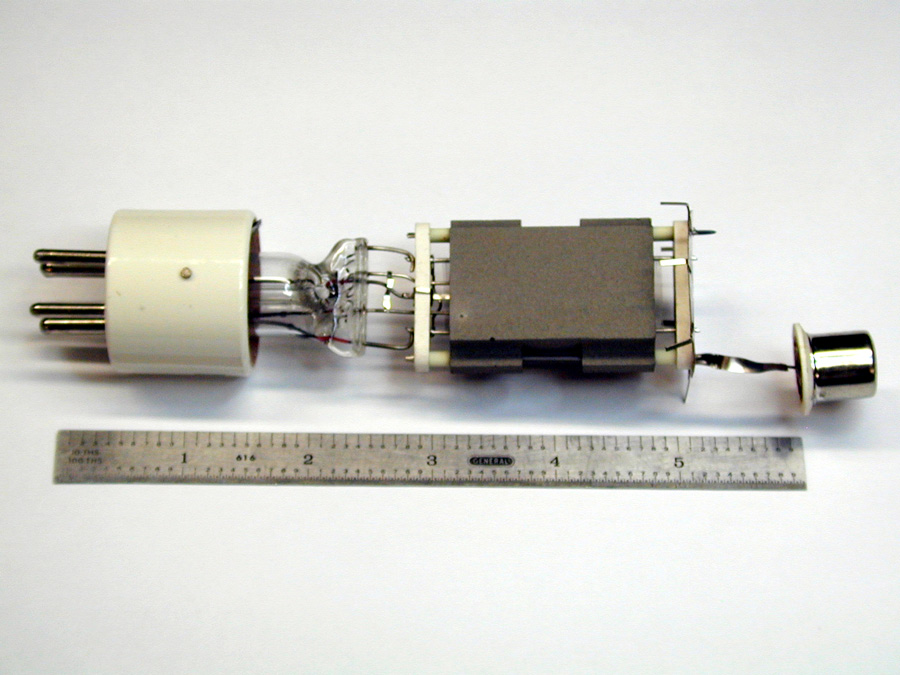|
TOF Tuning Aid
Stability problems and arcing problems are
unrelated!
Arcing or Gassy 572B Tubes

The tube to the left is in my high voltage test fixture.
In normal operation the anode voltage swings between twice high voltage
supply to a few hundred volts positive. If mistuned of if there is a load fault
of some time that unloads the tank, or if the exciter has a
ALC overshoot issue,
peak anode voltage can easily reach 3 or more times steady DC anode voltage.
A good 572B should take about 10,000 volts from anode, and show no signs of
color streaming or arcing inside the tube. Slight florescence in tube glass in
operation is common and not harmful, but any glow in cold tube internals with
application of high voltage is not acceptable.

At 7.5-8 kilovolts, this brand new 572B glows a reddish color deep inside the
ceramic and along the upper surface of the ceramic.
This 572B has an obvious problem in the ceramic insulator used to support the
anode. This is almost certainly impurities of contamination in the ceramic
insulator.
In an amplifier, this tube runs for a few hours and then randomly arcs. The
anode meter kicks upwards without drive, the grid meter backwards, and the
amplifier randomly “pops”.
No amount of preheating or operation cures this tube. It probably should not
be trusted even at 1500 volts.
Below is another 572, this one with even worse ceramic.

This is gas inside the tube:

Note the color and that the glow is outside the ceramic in the “vacuum”. The
plasma streamers originate from all sharp metal points connected to the grid and
anode inside the tube.
Stability Problems
Stability problems have nothing to do with arcing inside tubes. Arcing comes
from exceeding voltage breakdown. Sometimes a bandswitch or tuning capacitor
will arc, the most common cause being improper
power amplifier loading or tuning. Loading arcs are normally sizzling arcs,
and have to sustained for several seconds before damage occurs. These arcs do
not normally blow fuses or other components, they just damage the component that
is arcing through heat from the arc plasma. These arcs are caused by operating
with tube and tank energy not absorbed by the load.
Arcing inside tubes, which is typically the loudest noise (bang or pop), is
almost always instantly destructive. Plasma arcs inside tubes blow fuses,
diodes, transistors, and other power supply and bias components. The tube, in
effect, shorts the HV line directly to the grid or cathode. The section deals
with stability issues, not tube failures.
The 572B is a relatively unstable tube. It has needlessly long thin grid and
anode connections.
Let’s look at the inside of the 572B tube:

The grid-pin to grid connection has almost 2-1/2 inches of thin single
conductor length.
This sets the tube up for HF
instability or for VHF parasitics.
The anode is much better. It is a short distance path with only 1 inch of
thick ribbon.
The grid could be substantially improved. For many years, I tried to convince
manufacturers of 811 and 572 tubes to use an additional grid wire to the empty
pin, from the opposite support rod of the grid. This single change would be a
major improvement in RF performance of the 572B and 811A vacuum tube. The anode
could be slightly improved.
|




